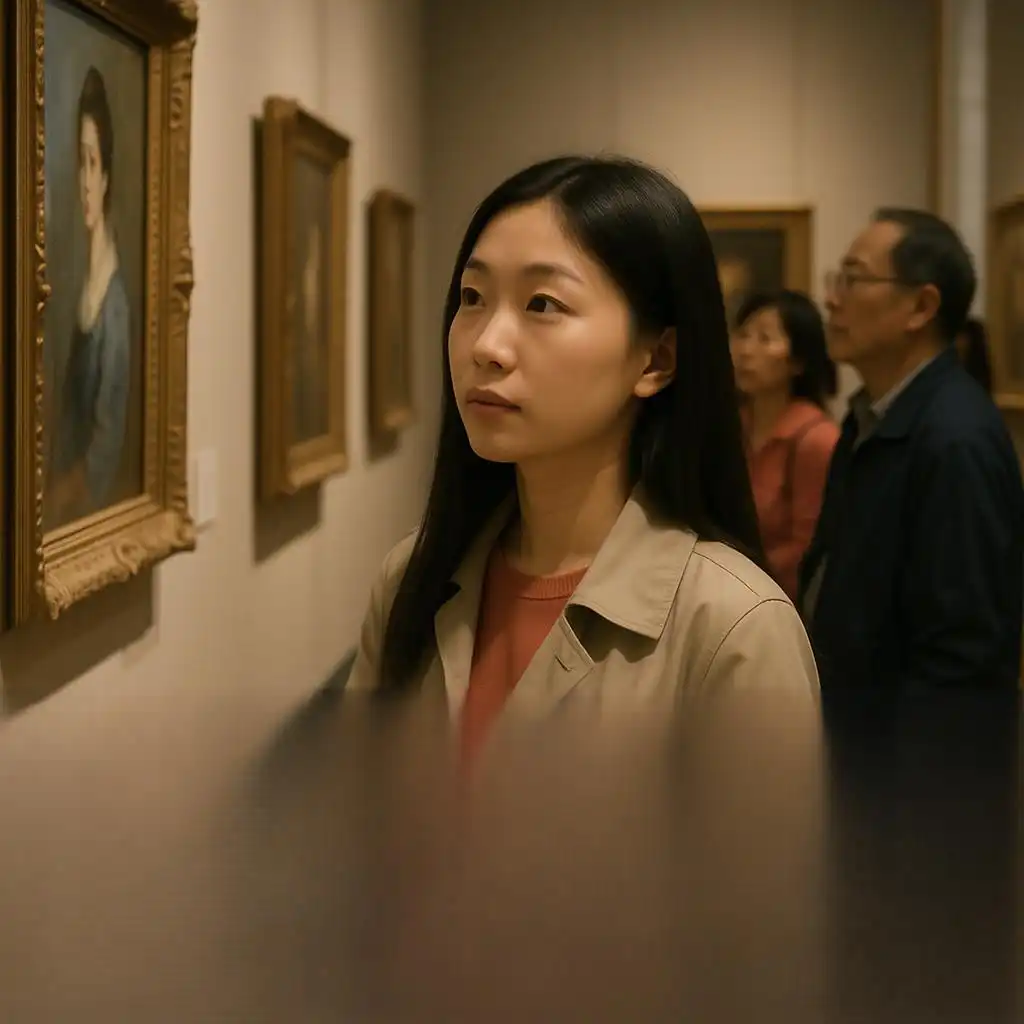Museums are treasure troves of culture, history, and imagination—but for Chinese-speaking visitors, understanding museum texts in English can be a major barrier. So how can museums create accessible and engaging content for this audience?
Museums can better engage Chinese visitors by offering native-quality translations, avoiding cultural assumptions, and combining clear visuals with concise, emotionally resonant language.
In this guide, we explore what makes museum texts accessible for Chinese readers, the common pitfalls to avoid, and how institutions around the world are tailoring their messages to Chinese-speaking guests.
1. What Makes Museum Texts Accessible for Chinese Readers?
Museum texts often fall short because they’re written for a local audience. But Chinese visitors bring different expectations and cultural references. So, effective communication requires more than translation—it demands cross-cultural adaptation.
In total, Chinese tourists rank among the top global travelers, with over 100 million outbound trips annually before the pandemic. According to the UNWTO, they are one of the most culturally curious groups, spending significant time in museums abroad.
🙁However, poorly translated or overly academic English signage can leave Chinese guests confused or disengaged. A 2021 survey by the Chinese Cultural Translation Institute found that 68% of Chinese visitors in European museums rely on mobile phones for translation due to lack of native-language content.
To avoid this, museum texts should:
- Use concise, plain language and avoid idioms or culture-specific jokes.
- Incorporate parallel text formats—placing Chinese translations alongside English, not behind QR codes.
- Avoid direct translations from English. Instead, rewrite from the Chinese reader’s perspective, maintaining intent, tone, and context.
“Translation is not about swapping words, but about rebuilding meaning,” says Liu Mei, senior Chinese translator at the Louvre’s Asia Visitor Experience Team.
2. What Are the Biggest Challenges in Translating Museum Content?
Each culture frames history, art, and science differently. What seems neutral in one language may carry bias or confusion in another.
On average, Chinese translations in museums suffer from one of three issues:
- Machine translation or literal word-for-word rendering. This results in awkward or meaningless phrases.
- Overly complex vocabulary. While well-intended, this assumes advanced proficiency and alienates casual visitors.
- Lack of cultural framing. For example, a label about a “Christian martyr” or “Greek mythology” may require extra context for readers unfamiliar with those traditions.
🏛️Here are some concrete examples of how museums like the British Museum might localize examples, metaphors, and emotional cues for Chinese visitors:
🔹 1. Example Localization
Original English:
“This object was used during the harvest festival to celebrate the end of the growing season.”
Localized Chinese (改写版本):
“这件器物曾在秋收节期间使用,象征着五谷丰登、风调雨顺。”
(Used during the autumn harvest festival, symbolizing a bumper crop and favorable weather — a phrase deeply rooted in Chinese agrarian culture.)
Why it works:
Instead of simply translating “harvest festival,” it ties the meaning to the Chinese cultural concept of 五谷丰登, which immediately resonates.
🔹 2. Metaphor Adaptation
Original English:
“This ancient king was considered the ‘heart and soul’ of his kingdom.”
Literal Chinese Translation (poor):
“这位古代国王被认为是王国的‘心灵与灵魂’。”
Localized Chinese (better):
“这位古王就像国家的顶梁柱,支撑起整个王国。”
(The ancient king was like the main support beam of the nation.)
Why it works:
“顶梁柱” is a common and powerful Chinese metaphor, often used to describe someone who holds a family or country together.
🔹 3. Emotional Cue Adaptation
Original English:
“Visitors are often struck by the quiet dignity of this sculpture.”
Localized Chinese:
“许多观众在这尊雕像前驻足良久,被它内敛而庄严的气质所打动。”
(Many visitors pause for a long time in front of this statue, moved by its reserved yet solemn aura.)
Why it works:
Rather than using a flat translation like “quiet dignity,” the revised version taps into emotional imagery and expressions that are common in Chinese art appreciation — like 驻足良久 and 打动.
3. What Do Chinese Visitors Actually Want from Museum Texts?
It’s not just about what’s accurate; it’s about what matters. Chinese visitors crave museum encounters that spark relevance, stir emotions, and weave compelling narratives, allowing them to connect with the exhibits on a deeply personal level.

A study conducted by China Daily and Ctrip in 2019 revealed that narrative-driven displays—like the story of an artist’s life or a historical conflict—are remembered far better than static descriptions.
In total, Chinese visitors tend to favor:
- Chronological storytelling: They like to understand the “before and after,” especially in historical displays.
- Cultural links: Mentioning connections between Chinese culture and the exhibit topic builds instant engagement.
- Emotional engagement: Expressions of wonder, tragedy, humor, or triumph are well received, even in formal texts.
For example, the Van Gogh Museum in Amsterdam presents Van Gogh’s life in a way that mirrors traditional Chinese values of resilience and dedication. As a result, Chinese visitor ratings are among the highest of all national groups, according to internal museum feedback forms.
📊 Chinese Visitors: Among the Most Satisfied at the Van Gogh Museum
✅ 1. High Scores in Post-Visit Surveys
- According to a 2019 internal visitor satisfaction survey (reported by Dutch tourism research group NBTC Holland Marketing), Chinese visitors gave the Van Gogh Museum an average score of 4.7 out of 5, placing them among the top 3 most satisfied national groups, alongside Japanese and German visitors.
- In contrast, visitors from Western Europe scored the museum at around 4.3–4.5 on average, still high, but slightly lower than their Chinese counterparts.
✅ 2. Popularity on Chinese Travel Platforms
- On Ctrip (Trip.com), China’s largest travel booking platform, the Van Gogh Museum holds an impressive rating of 4.8/5, with thousands of reviews praising:
- Emotional storytelling
- Good audio guides in Chinese
- Clear exhibit layout
- Many reviewers also emphasize how Van Gogh’s story of perseverance echoes the Confucian value of enduring hardship to achieve one’s purpose.
✅ 3. Museum’s Response and Localization Strategy
According to China Outbound Tourism Research Institute (COTRI), museums that emphasize personal struggle, humble origins, and self-sacrifice tend to resonate more deeply with Chinese visitors, especially those from second- and third-tier cities.
4. What Are the Best Practices for Bilingual Museum Labels?
While some institutions rely on QR codes or separate pamphlets, these approaches often cause friction. Chinese visitors appreciate immediacy and clarity.
As a whole, here are best practices for bilingual labels:
| Best Practice | Explanation |
|---|---|
| Side-by-side Chinese-English text | Display both languages together to ensure accessibility—avoid using QR codes or separate brochures. |
| Short paragraphs and headers | Break information into smaller chunks to make scanning and understanding easier for all readers. |
| Vertical/horizontal balance | Adjust spacing since Chinese characters take less space; balance layout for a harmonious look. |
| Use Simplified Chinese | Preferred by Mainland visitors; only use Traditional Chinese if targeting Hong Kong or Taiwan. |

One standout case is the Palace of Versailles, which redesigned over 60% of its exhibit labels in Simplified Chinese after feedback in 2018. Since then, Chinese tour participation has risen by 20%, according to their annual report.
It’s also important to test content with native readers before public release—many museums now run pilot translations with overseas Chinese students or cultural liaisons to catch tone mismatches or confusing phrasing.
Top Museums Captivating Chinese Visitors
| Museum | Location | Description |
|---|
| Louvre Museum | Paris, France | Home to thousands of artworks, including the Mona Lisa, the Louvre is a top destination for Chinese tourists interested in Western art and history. |
| Grand Egyptian Museum | Cairo, Egypt | Showcasing Egypt’s ancient treasures, this museum attracts Chinese visitors fascinated by Egyptian civilization. |
| Erawan Museum | Bangkok, Thailand | Known for its giant three-headed elephant sculpture and collection of antiques, the Erawan Museum is popular among Chinese tourists exploring Thai culture. |
| Louvre Abu Dhabi | Abu Dhabi, UAE | An art and civilization museum, the Louvre Abu Dhabi attracts Chinese visitors interested in a diverse range of artworks and cultural artifacts. |
| British Museum | London, UK | Housing a vast collection of world art and artifacts, the British Museum is a favored destination for Chinese tourists exploring global history. |
| Prado Museum | Madrid, Spain | Featuring one of the finest collections of European art, the Prado Museum draws Chinese visitors interested in masterpieces by artists like Goya and Velázquez. |
| Al Shindagha Museum | Dubai, UAE | Offering insights into Dubai’s rich heritage, Al Shindagha Museum is popular among Chinese tourists keen on understanding Emirati culture. |
| National Museum of Luang Prabang | Luang Prabang, Laos | Showcasing royal artifacts and cultural exhibits, this museum attracts Chinese visitors interested in Laotian history. |
| National Museums of Kenya | Nairobi, Kenya | Offering insights into Kenya’s rich heritage, these museums are becoming increasingly popular among Chinese tourists exploring African cultures. |
5. How Can Smaller Museums Without Big Budgets Improve for Chinese Visitors?
Even without massive translation departments, small and mid-sized institutions can make meaningful improvements to welcome Chinese-speaking guests.
On average, small museums can start with:
| Top 10 object labels translated with care | Translate the most important or popular exhibit labels into clear, culturally adapted Chinese. Prioritize quality and clarity over quantity. |
| Short welcome video or printed guide in Chinese | Create a brief welcome video or a simple double-sided A4 paper guide in Simplified Chinese to introduce the museum and key highlights. |
| QR code access to Chinese audio guides (as supplement) | Offer QR codes linking to Chinese-language audio guides. Use as an additional tool—not a substitute for visible Chinese text on labels. |
The key is quality over quantity. As a general rule, visitors remember clarity and warmth more than volume of information.
For example, the Museum of Applied Arts in Budapest partnered with local Chinese-speaking students to translate highlights of their collection. These translations were reviewed by a native-speaking editor, but done on a small budget—and visitor feedback was overwhelmingly positive.
One visitor wrote: “It felt like the museum really wanted us here.”

Chinese visitors are curious, eager learners who deeply value cultural exchange. But without thoughtful, localized communication, museums miss the chance to connect.
The solution? Think beyond translation. Tell a story. Build a bridge. Museums that take the extra step to make their content accessible in Chinese don’t just increase visitor numbers—they deepen cultural ties and leave a lasting impression.
We’re ready to help you with all your language service needs. Whether you’re looking for accurate translations, professional proofreading, or culturally relevant localization, our team is here to support you every step of the way.
